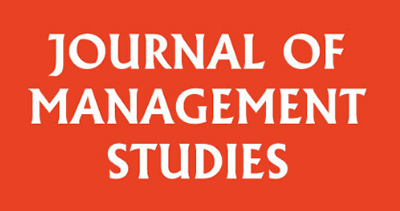
Newspapers’ headlines always relate M&A (mergers and acquisitions) to the action of CEOs, however, what about the action of middle managers that work in both organizations? What about their interactions along the acquisition process? How do these interactions impact the development of the acquisition process? If you ever wondered about the behind scenes of M&As, then you might want to read our article that was recently published in the Journal of Management Studies.
Brief summary
Drawing on interviews with acquiring and acquired middle managers, our study explores the unfolding relational dynamics, i.e. interactions between acquiring and acquired middle managers. We introduce the concept of actionable intersubjectivity as a core ability of middle managers to take into account the presence of the other while accomplishing integration tasks. Actionable intersubjectivity is developed along the acquisition process, starting at the pre-acquisition stage, in various interaction spaces, such as formal meetings, informal conversations and integration projects where they build a knowledge of ‘the other’ and use it to achieve strategic interdependence while preserving some degree of autonomy of their organizations.
Strategic interdependence, organization autonomy and middle managers
A core challenge for the success of M&A resides in managing the balance of merging organizations achieving sufficient strategic interdependence while simultaneously preserving the vital organizational autonomy of the previously separate units. While the need for strategic interdependence refers to the creation of conjoint strategic capabilities, the need for organizational autonomy stands for the preservation of the crucial capabilities of each organization.
On one hand, acquiring middle managers are predominantly associated with the generation of strategic interdependence through the development of new strategic capabilities expected from the acquisition. On the other hand, acquired middle managers are described as fighting for some degree of organizational autonomy to protect their own capabilities. Therefore, balancing the needs of strategic interdependence and organizational autonomy during the integration process is crucial for creating synergic outcomes and harvesting the anticipated strategic and operational benefits. Our article focuses on how this balance is crafted by acquired and acquiring middle managers’ relational dynamics along the acquisition process.
Building actionable intersubjectivity
Based on narrative interviews with middle managers representing both sides of cross-border acquisitions, we unveiled four consecutive and interlinked relational dynamics that unfold along the acquisition process:
- Dancing from a distance (pre-acquisition), from the announcement of the transaction to the signing of the purchase agreement, is the starting point of a complex relationship where middle managers from both sides start getting sense of the other; they become aware of the presence of their counterparts;
- Seducing the other (approval) is triggered by the signature of the purchase agreement and finishes when the acquirer takes control of the acquired organization. During this stage acquired middle managers are left in an organizational limbo; however, they approach the other side creating informal interaction spaces that allow both groups of managers to start deciphering how the other thinks;
- Confronting the other (post-acquisition I) starts when the acquirer takes control of the acquired firm. Acquired middle managers are now pressed to implement the integration projects, often neglecting acquired middle managers’ efforts to adjust the integration projects to their specific context. However, they experience how the other acts and reacts by working abreast and facing together the struggles of these implementations;
- Co-orienting each other (post-acquisition II) consolidates middle managers’ understanding of the position of the other, even when they do not agree. By working and struggling together facing common problems, they learn to listen and trust each other, so they are able to put oneself in the place of the other and importantly understanding each other’s context.
So, acquired and acquiring middle managers develop actionable intersubjectivity or the ability to balance the necessities of both organizations, seize the impact of their possible actions on both sides and generate plausible solutions that synthesize and concurrently differentiate and acknowledge the specific knowledge that each organization brings to the transaction.
Interactional spaces: where actionable intersubjectivity is built
Acquired and acquiring middle managers’ relational dynamics occurs in interactional spaces often informal and initiated by middle managers themselves (e.g. corridor and informal conversations, clandestine meetings outside the organizations, conjoint field work, and day-to-day work). In these interaction spaces, middle managers freely exchange information about their backgrounds (specific ways of thinking and working) and, more importantly, their own visions of the integration process. Therefore, these interaction spaces allow them to temporarily abandon their official positions, fostering collective engagement in the integration process. These spaces are forums for gaining a practical understanding of how operations and processes can be integrated, thereby adapting and challenging the mandate received from top management in more formal spaces. Without these informal interaction spaces, it would be impossible to develop and nurture their knowledge of how the other thinks and works in specific circumstances and, therefore, achieve actionable intersubjectivity.
Why this matters?
Importantly, we did find that actionable intersubjectivity was not achieved in those transactions where middle managers stood apart without much interaction. Our research claims that in addition to the many formal, often top-down-induced, interaction spaces during an acquisition, there is a need to promote initiatives from middle managers to create informal interaction spaces throughout the acquisition process because these appear to be essential for the development of actionable intersubjectivity and to obtain the crucial balance between strategic interdependence and organizational autonomy.
Crucially, the development of actionable intersubjectivity enables middle managers to remain flexible and able to balance these two dimensions to adapt to contextual reality and opportunities, rather than considering this relationship static and predetermined during the pre-acquisition stage as normally requested by the top. This highlights the benefits of a more bottom-up, or middle managers-driven, approach to acquisition integration.

0 Comments